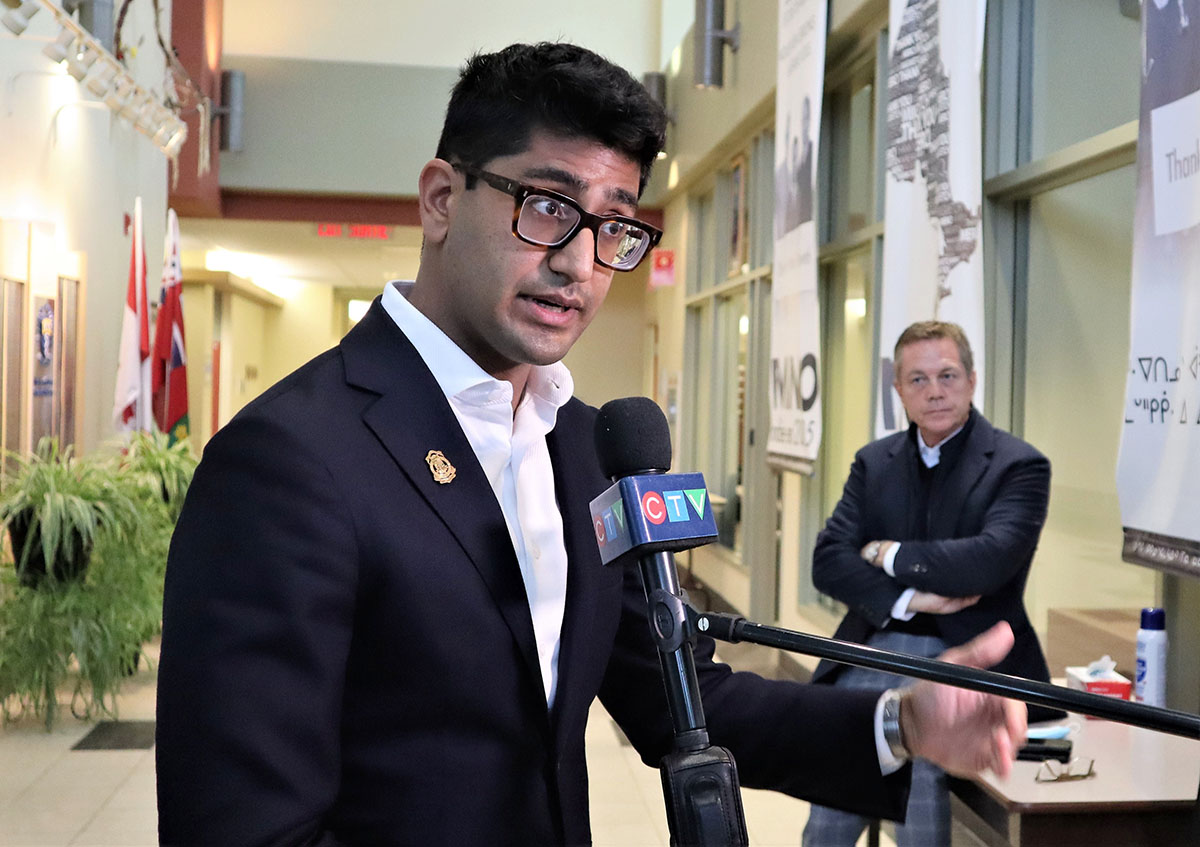Recommendations to fix Ontario’s broken health-care system – underfunded for decades and battered by the COVID-19 pandemic – are now in political hands.
The Ontario Medical Association’s Prescription for Ontario: Doctors’ 5-Point Plan for Better Health Care and the Prescription for Northern Ontario was delivered over two days in two cities in late October.
The plans were the result of the largest consultation in OMA’s 140-year history, which took place over seven months earlier this year. More than 1,600 OMA members, 110 health-care stakeholder organizations and 8,000 Ontarians from 600 communities shared their opinions about the challenges facing Ontario’s health-care system, culminating in a detailed roadmap to both recovery and sustainability.
“We’ve witnessed just how fragile Ontario’s health-care system is and how much stronger and more resilient it really needs to be,” Allan O’Dette, OMA chief executive officer, told a virtual media conference in Toronto, where the main OMA action plan was unveiled.
“We’re here this morning on behalf of 43,000 doctors to share a plan for better health care that builds on existing strengths and offers some solutions to narrow the gaps that have widened during this pandemic.”
The OMA’s goal is to encourage all political parties to adopt the recommendations as part of their campaign platforms for the June 2022 provincial election.
“We’re going to spend the next number of months working with all the political parties and our stakeholders to refine and define a way of implementing the broad consensus that we’ve brought forward,” O’Dette said. “This is going to be our mission for the next six months.”
Prescription for Ontario: Doctors’ 5-Point Plan for Better Health Care contains 75 pan-provincial recommendations focused on these five priorities:
OMA President Dr. Adam Kassam said there is an urgent need to deal with the backlog of 20 million medical procedures caused by the ongoing COVID-19 pandemic. This includes preventive care such as cancer screening, surgeries and procedures, routine immunizations and diagnostic tests.
“Doctors are already seeing patients who are sicker than they should be because of serious conditions undetected or untreated during the pandemic,” Dr. Kassam said.
Another recommendation outlined in Prescription for Ontario is more investment in home care and other community supports.
“It costs a whole heck of a lot less to provide services outside of the hospital, so hundreds of millions of dollars can actually be saved every single year,” Dr. Kassam said.
While the main OMA Prescription for Ontario master plan was unveiled virtually in Toronto on Oct. 26, O’Dette and Dr. Kassam were able to unveil Prescription for Northern Ontario in person a day earlier at the Northern Ontario School of Medicine’s Laurentian University campus in Sudbury.
Prescription for Northern Ontario includes 12 recommendations to address the unique health-care challenges in northern Ontario, due to its vast geography and smaller population and shortages of health-care workers. Among its recommendations is a call to focus on “the profound and disproportionate impact of the opioid crisis and mental health issues in northern Ontario and ensuring there are more resources to fight the crisis, especially in northern Ontario where resources are limited.”
As part of their Sudbury visit on Oct. 25, O’Dette and Dr. Kassam visited the Crosses for Change memorial in the city’s downtown, where 214 white markers honour those who have died of opioid overdoses. It was created by Denise Sandul, who erected the first cross to honour her son Myles Keaney, who died of an opioid overdose in the fall of 2020.“It was a heartbreaking moment but also a moment of reflection on the hard work we need to do,” Dr. Kassam said.
“This is one of the first trips that I’ve taken in two years as a result of the pandemic,” he added. “And when we see people in person who have experienced loss … those stories become very real and they become impactful. You see the gravity and magnitude of the crisis when experiencing it in person.”

Dr. Sarita Verma, dean of the Northern Ontario School of Medicine’s Laurentian University campus, and Dr. Sarah Newbery, assistant dean for the school’s physician workforce strategy, shared details of the region’s biggest problems and the solutions required.
Topping the list is the need for an additional 300 doctors and health-care professionals to offer equitable access to care for residents in their own communities. Updated incentives and supports for physicians and allied health-care workers are important parts of the solution, they said.
Dr. Verma said their school was created in 2005 to address physician shortages in northern Ontario, a region that covers 90 per cent of the provincial land mass but has only six per cent of the population.
Since 2005, more than 800 physicians and 700 residents have graduated from the school and have gone on to become family doctors caring for 250,000 people. It would take five graduate cohorts to approach the number of doctors required now, Dr. Verma said. She said the school, with campuses in Sudbury and Windsor, gets 2,400 applications a year but can only accept 64 students annually.
Dr. Newbery, a general practitioner in Marathon for the last 25 years, said it is important not to let local health-care systems in the north deteriorate further because repairing them after they fail is much harder. With the pandemic, northern health care has become increasingly fragile, due to retirements, departures and burnout, she said.
“What many of us fear now is that the fragility will become so significant, local health systems will actually begin to break down,” she said.
O’Dette said both the problems and solutions are collective in nature and “everybody needs to get rowing in the right direction.”
“It’s not all about doctors, it’s about communities,” he said. “We’re here to play part of a role in enabling a more collective group of people.”